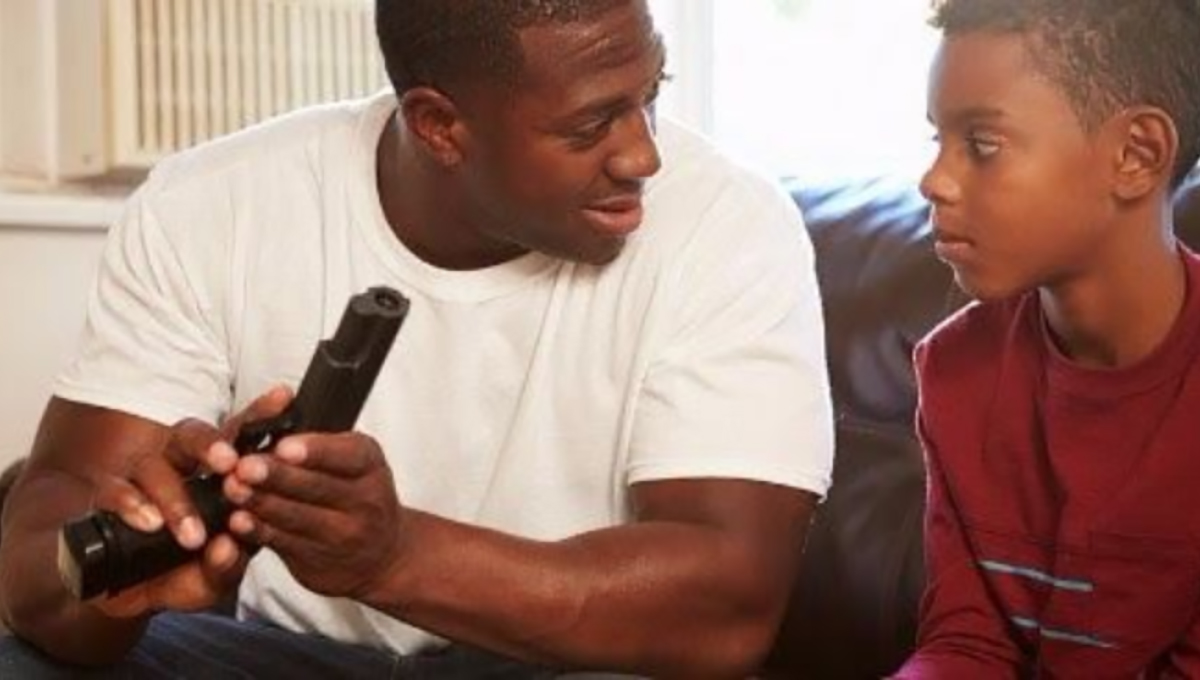Parenting comes with a lot of hard decisions. From bottle or breastfeeding to public or private schools, it can feel like every decision you’re faced with will make or break your child. And when it comes to protecting and defending your family, the choices get even more robust. In the United States of America, the Second Amendment ensures your natural right to protect your family with firearms. Yet some argue that keeping guns around children puts them at a higher risk than it protects them. For many, keeping guns in the home is a big decision. Because while it allows you an incomparable defense option, it could also lead to your child’s little hands on a deadly weapon.
Remember, you are responsible for the safety and well-being of your children. One-third of most Americans keep a gun in their household. One way or another, kids learn about firearms. It’s your responsibility to make sure you’re the one teaching them correctly.
Demystifying Firearms
Guns are taboo for many kids. That draws them to firearms the same way it brings them to drugs, sex, or other addictions. It is necessary to demystify guns for both parents who keep guns, especially those who don’t.
When you teach children about guns, when they see you take them apart, clean them, put them back together, and learn how they work and what they do – firearms lose their mystery. They become a tool and a weapon, but are no longer shrouded in the vague “dangerous and deadly.” To make this happen, you need to make guns (or at least talking about guns) a part of your routine. These gun talks can’t be isolated events. Parents must reinforce the message for it to take root and become useful.
If you’re unsure where to begin, ask your child what he or she knows about guns, and ask if there are any questions. See what the response is and go from there. Also, make sure your child understands certain realities about firearms. To ensure this happens, be sure to discuss the following:
- The difference between toy guns and real guns.
- The difference between guns on television and guns in real life.
- The devastation and destruction weapons can cause.
Talking to your kids about firearms works, but studies show that people without guns in their homes are less likely to do so regularly, and up to 50 percent of non-gun-owning citizens NEVER talk to their children about guns. These are the kids that don’t understand weapons, how they work, and the real danger playing with firearms can create.
Gun Safety Must Come First
Gun safety, especially when it comes to children, is a big deal. In 1999, 3,385 children aged 19 and younger were killed by a gun – including homicides, suicides, and unintentional injuries. Regardless of your position on guns and gun control, people can agree that’s way too many.
People who have children in their homes aren’t always practicing safe and secure gun storage. Inadequately storing firearms is one of the main reasons children die.
If you opt to keep guns in your home, you give yourself the ability to protect those you love the most. But you’ve got to keep them safe. Here’s how you can achieve both:
- Keep your gun locked and unloaded.
- If you feel the need for a loaded weapon at home, keep it on your person.
- Store ammunition in a different location.
- Keep keys to the gun safe away from commonly used keys.
- Children should not know where guns are stored.
A gun that is unloaded, but has a full magazine beside it in your bedside drawer, is not a secure gun. Don’t store your firearms this way.
Keeping Guns Safe with Technology
While it’s important to teach your kids about gun safety, you can also use technology to keep your guns secure. New, smart gun technology is becoming available and includes a fingerprint scanner to unlock and fire the gun. Also available soon is grip recognition technology that determines an authorized gun user by the muscle tension in the gun holder’s hand.
Another exciting concept for gun safety is the RFID token. If not within a certain proximity to the gun, it will not allow it to fire. Unless the firearm is in the owner’s hands, it won’t fire.
Teaching Kids About Gun Safety
Gun safety goes beyond securing your weapons. Kids need to understand what to do if they ever come across a gun because if you don’t teach them, they’re going to try to figure things out on their own – and that can quickly turn deadly.
Teach children always to assume the following:
- All guns are loaded.
- Pointing a gun at something means you want to destroy it.
- Never touch the trigger until you’re ready to shoot.
- Be 100 percent sure of your target and what’s beyond it.
If your child has play guns of any sort, uphold gun safety rules with these “toy” guns as well. This practice teaches them always to treat guns with respect, even when they’re not quite “real.”
Teaching Kids to Handle Guns
Children who learn to handle guns the appropriate way and understand when and where it’s okay to use firearms are less likely to play with guns or use them in unsafe places. These children understand the importance of gun safety and know the damage guns can create. Therefore they’re less likely to handle them unauthorized.
- Shoot fruit: By shooting cantaloupe, honeydew, and watermelon, kids can visualize the reality of the force behind a firearm.
- Start with a small-caliber: While your child might want to handle the “big” guns, start with a small-caliber weapon. A beginning shooter should always focus on building shooting skills with a gun that doesn’t have handgrip or recoil issues. This suggestion allows the shooter to develop skills without having to fight against the weapon.
- Have them watch: After shooting, make sure to show your child how to take the gun apart, clean it, and put it back together. This process teaches the importance of proper gun maintenance.
- Always follow the rules: When you’re an adult who’s been shooting for years, it’s easy to forget the safety precautions you should be using. Remember, If you’re shooting with a child around, don’t take shortcuts. Be safe and teach them the right way to handle firearms. That way, an educated child is a safer child and family.


1 Comment
TIMOTHY BLUITT
I found this article very educational. As a former Vietnam era US Marine I truly appreciate such information you are providing NAAGA members on safety such safety issues.
Respectfully yours,
Timothy Bluitt
Comments are closed.